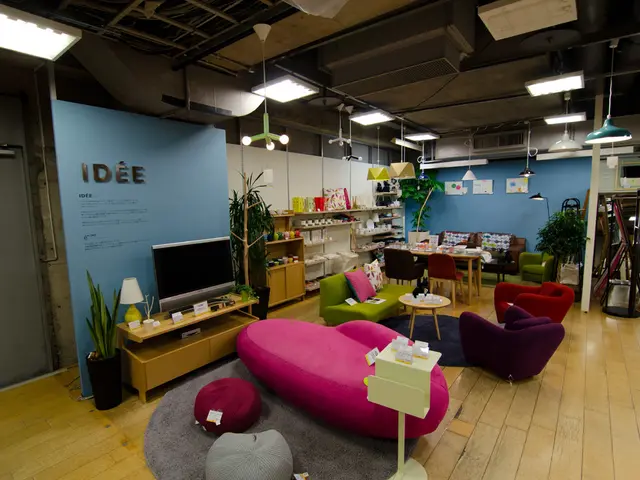Strategies for Creating a Blossoming Flower Bed Garden
Growing a Successful Flower Garden Across Climates
A well-designed flower garden can bring a touch of beauty and colour to any outdoor space. To create a thriving and long-lasting garden, it's essential to consider the climate zone, soil type, sunlight, and plant preferences. This article will guide you through the key aspects of choosing and caring for perennial plants suitable for various climate zones, ensuring a successful flower garden in Northern, Southern, and Western regions.
1. Selecting Perennials for Your USDA Hardiness Zone
When choosing perennials for your garden, it's crucial to select species adapted to your USDA hardiness zone. Northern climates (zones 3-6) require cold-hardy perennials like Foxglove (Digitalis purpurea), Russian sage, and Autumn Joy sedum. In contrast, Southern climates (zones 8-11) are ideal for heat-tolerant perennials such as Agapanthus africanus, Ice Plant, and native Florida plants. Western regions, like the California Bay Area, favour drought-tolerant and pollinator-friendly plants like Lavender (Lavandula angustifolia), Yarrow (Achillea millefolium), and Salvias [1][2][3][4][5].
2. Matching Sunlight and Soil Preferences
Ensure that the sunlight requirements of your plants match your garden conditions. Full sun plants, such as Lavender and Agapanthus, need at least 6 hours of sunlight daily. Partial sun/shade plants, like Foxglove and some Geraniums, tolerate 3-6 hours of sun. Full shade plants, suitable for woodland edges or shaded northern sites, need less than 3 hours of direct sunlight [1][2][4]. Most perennials prefer well-drained, rich, organic soil, but some drought-tolerant plants like Russian sage, Lavender, and Yarrow thrive in poorer soils with good drainage [1][4][5].
3. Watering and Maintenance Based on Climate
In hot, dry Western and Southern climates, prioritise drought-tolerant perennials like Russian Sage, Lavender, and Ice Plant to reduce irrigation needs. Northern gardens with cooler summers may support moisture-loving perennials, but avoid waterlogging. Deadhead spent blooms to promote continual flowering, and overwinter tender perennials indoors or with mulch in colder zones [1][2][3].
4. Additional Tips
Choose disease-resistant cultivars, group perennials with similar cultural needs together for easier care, and incorporate native plants to support local ecosystems. Consider the height, foliage colours, and textures when planning the garden design, and mix plant heights, colours, and sizes to add movement and a meadow-like look [2][4].
5. Building and Designing Your Flower Garden
Building a flower garden can be done with a window box, a flower bed, or a few planters. Choose flower varieties considering the colour of the flowers, the height of the plants, and the spacing. Sow seeds 4 to 6 weeks before the average last frost date for optimal growth. Tall plants and bushy shrubs should be set at the back to prevent casting a shadow over smaller plants. Raised beds should use a well-draining potting mix that retains moisture well and be enriched with organic compost [6].
6. Caring for Your Flower Garden
A soil test should be conducted to determine the pH level, and most flowering plants thrive in locations that receive at least 6 hours of sunlight, especially south-facing spots. An irrigation system can help regulate water levels in a garden full of perennials. It is recommended to plant low-maintenance perennial and annual plants that do not crave too much water for a blooming garden all season long [6].
7. Choosing Plants for Specific Climates
Plants for western gardens should be tolerant of drought, extreme heat, and humidity (e.g., Calla lilies, Salvia, lavender, Lantana, Gazania, Desert marigold, and Asiatic lilies). Plants for southern gardens should be able to tolerate high heat, humidity, and cooler climates so the flowers bloom until frost (e.g., Asiatic lilies, Coreopsis, Gaura, Dianthus, and Salvia). Plants for northern gardens should be hardy and able to withstand extreme heat, drought, cold climates, and shady environments (e.g., Daylilies, astible, moonbeam, Heuchera, May Night, Phlox subulata) [6].
8. Shade-Loving Plants and Small Shrubs
Shade-loving flowering plants can be grown in north-facing spots, and small shrubs like distylium, nandina, loropetalum, and ligustrum can frame a flower bed and add lushness. For container gardens or window boxes, layer the elements with the tallest at the back, the middle with colourful elements, and finally, trailing plants on the front [6].
By following these guidelines, you'll create a vibrant, long-lasting flower garden that thrives in your specific climate zone. Happy gardening!
[1] Plant Lust [2] Missouri Botanical Garden [3] Perennial Resource [4] Sunset Western Garden Book [5] California Native Plant Society [6] Garden Myths
- To enhance the aesthetic appeal of your home and create a harmonious connection between your indoor space and garden, opt for perennials and plants that complement your home-and-garden lifestyle, such as those found in our guide on Growing a Successful Flower Garden Across Climates.
- When landscaping your backyard or front garden, incorporate perennials from different climate zones into your home-and-garden design, ensure they thrive with proper sunlight, soil, watering, and maintenance as described in our comprehensive guide to flower gardening across various regions.




